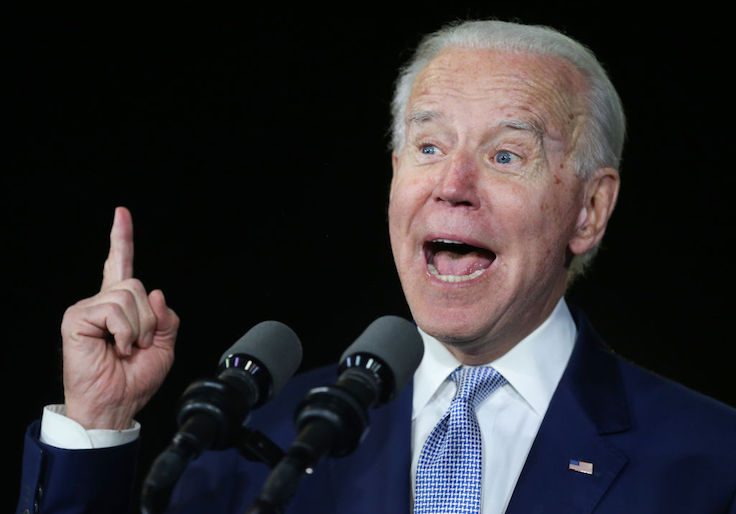After more than 10 months on the campaign trail, Democratic presidential frontrunner Joe Biden on Wednesday released his plan to address America's drug crisis.
The Biden plan would pour $125 billion into the crisis over the next 10 years, more than any of his 2020 opponents had previously promised to spend. In many ways, however, the plan mirrors other Democrats' approaches, focusing heavily on treatment and harm reduction, identifying pharmaceutical firms as the major perpetrators of the crisis while deemphasizing the role of law enforcement.
Biden's lack of emphasis on law enforcement and bare lip service to the crisis's current epicenter in Mexico and China suggests the former vice president is out of touch with the way the drug epidemic has shifted over the past several years.
The new plan debuted just weeks after the latest data from the Centers for Disease Control revealed a slight decline in drug overdose deaths in 2018, down from roughly 70,000 in 2017 to just over 67,000. That figure, however, still makes 2018 the second deadliest year on record for drug overdose deaths. Prior to Wednesday's release, Biden made allusions to the crisis, but had not placed it front and center as President Donald Trump did in his own campaign four years ago.
If enacted, Biden's plan would represent a substantial investment in combating the drug epidemic. Of the $125 billion, $75 billion would be allocated to flexible state grants for education, treatment, and harm reduction measures including needle exchanges. A further $30 billion would be allocated to expand access to medication-assisted treatment—including ending federal regulations that limit doctors' abilities to prescribe drugs like buprenorphine to treat opioid dependency—and to increasing access to the overdose-reversing drug naloxone. The remaining $20 billion would go toward other initiatives, including targeted support for veterans and Native Americans.
Law enforcement is conspicuously absent from the list of funding priorities. Biden would earmark unspecified amounts to "support first responders" with naloxone and mental health training, including connecting mental health professionals with police departments. But there is no mention of added funding for street-level enforcement, a particularly significant omission given the declining size of America's police departments. The only added funding for the Drug Enforcement Administration would support its diversion control division, which stops the use of pharmaceutical—i.e., licitly produced—drugs for illegal purposes.
That added funding reflects the Biden plan's focus on prosecuting pharmaceutical firms widely blamed for causing the current crisis. Biden would instruct the Department of Justice to prosecute pharmaceutical firms and their executives, aligning with other 2020 candidates who promised to crack down on big pharma if elected. By contrast, Biden would soften other criminal justice system responses to drug crime, ending federal prosecutions for drug use and incentivizing states to do the same. (As of the most recently available data, just 3.5 percent of state prisoners and less than 1 percent of federal prisoners were incarcerated for drug possession.)
To its credit, Biden's plan acknowledges the role that non-pharmaceutical drugs play in the current crisis, promising to slow the flow of fentanyl from China across the Mexican border. Biden promises to make fentanyl a key component of trade negotiations with China, as Trump has, and to ramp up enforcement at ports of entry. The plan, however, largely disregards the thousands of pounds of drugs that flow in between those ports.
The focus on treatment and reduction at the expense of interdiction ignores the current dynamics of the drug crisis. The Biden plan assumes pharmaceutical firms continue to drive the crisis. In reality, drug overdose deaths associated with prescription opioids fell between 2017 and 2018, and are now the least common among the major causes of drug overdose death. The plan also fails to acknowledge the changing composition of the illicit drug supply, only once mentioning methamphetamine and giving no mention to the increase of cocaine overdose deaths.
Such omissions matter because treatment and harm reduction can only go so far in reducing overdose deaths. One analysis suggested that such tools could cut the overdose death rate by only about 10 percent through 2025. That may even be a high estimate, as overdose deaths move away from opioids, for which there are proven chemical treatments, toward methamphetamine and other stimulants, for which no medications exist.
Biden's plan, then, mirrors the limited scope of those of now-departed 2020 contenders Sen. Elizabeth Warren (D., Mass.) and Pete Buttigieg. Both candidates, likely cowed by the Democratic Party's increasing hostility toward law enforcement, focused their plans on treatment and harm reduction, leaving major absences in the sort of comprehensive response required to combat a historic crisis.
